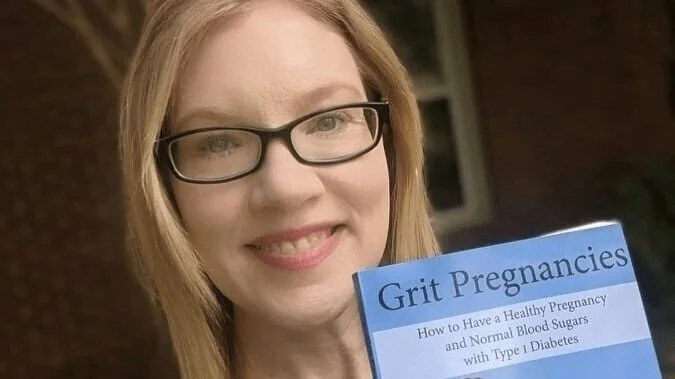Written by Lucía Feito Allonca, Heath Law and Biomedicine. Patient’s Rights Specialist. Diabetes Educator.
There is a lot of talk about diabetes, but what is it really?
Is it a single health condition, or several?
Are there different causes for developing diabetes, or are there common elements?
With the aim of disseminating reliable information and education on diabetes, I attach this article that I wrote within the framework of the “This IS diabetes” campaign in Beyond Type 1, with the aim of eradicating myths and erroneous beliefs, harmful to our health.
The Latin phrase diabetes “to pass through” comes from the Greek loan word Dia “through” and Betes “to pass.” It is, according to the dictionary of the Royal Spanish Academy, a metabolic disease characterized by excessive urine output, weight loss, intense thirst and other general disorders.
TYPE 1 DIABETES
Type 1 diabetes was previously also known as juvenile diabetes due to the high number of diagnoses in children and young people. Today it is known that type 1 diabetes because it can appear at any time of life, not just childhood or adolescence.
It is a chronic condition of autoimmune origin that causes the body to be unable to produce the hormone insulin, responsible for regulating blood glucose (sugar) levels. Its symptoms are polyuria, which means frequent urination, polyphagia, which implies excessive hunger, weight loss that occurs without apparent explanation, and tiredness/fatigue.
It is important that we understand that type 1 diabetes has an autoimmune origin and that the person will depend on the external supply of the hormone insulin to live and stay healthy.
It is essential to put an end to myths and erroneous beliefs that still circulate in society, such as that “diabetes is a thing for older people” or that “insulin is for serious cases.” In type 1 diabetes, insulin is the only treatment option.
Managing type 1 diabetes involves making interventions in people's lifestyles, such as diet, exercise, and taking insulin. To carry out an adequate dosage of this hormone we must know our blood glucose (sugar) levels, a task which will require a continuous glucose meter or blood glucose measurements made with a blood sugar meter. The success of treatment will be affected by the level of commitment of the family and the environment, personal/family circumstances, as well as other socio-economic factors.
TYPE 2 DIABETES
Diabetes 2 manifests itself when the body cannot use insulin adequately, presenting the so-called “insulin resistance.” The pancreas releases extra insulin, but over time it can't keep up with production to keep blood glucose (sugar) levels in a healthy range.
The factors that influence the appearance of type 2 diabetes are obesity, smoking, genetic factors and factors related to lifestyle, making it a multifactorial condition.
The myths that single out and stigmatize people who live with type 2 diabetes often do so because they do not understand the cause of the disease.
Also, the use of insulin seems to be associated in popular culture with negative connotations, something that we have to tackle at its roots, since allowing these erroneous beliefs has a serious associated cost: posing a psychological obstacle for many people who need it to be able to take insulin, enjoy better health and quality of life.
GESTATIONAL DIABETES
It is a type of diabetes that causes high blood glucose levels during pregnancy. It usually starts between the 13th and 28th week of the pregnancy and will disappear after the baby is born.
Gestational diabetes causes a high level of blood glucose, dangerous for your baby's health, and subsequently produces a greater risk of type 2 diabetes in the future.
LADA DIABETES
Like type 1 diabetes, Latent Autoimmune Diabetes in Adults (LADA) is the result of an autoimmune process. This type of diabetes usually occurs in people over 30 years of age, which is why it is often misdiagnosed as type 2 diabetes.
Unfortunately, even today, many health care providers continue to think that type 1 diabetes/LADA only occurs in the child and adolescent population, and many adults are misdiagnosed with type 2 diabetes. It is crucial to breaking myths and share accurate information. Type 1 diabetes (called LADA in adults) can be diagnosed at any age!
MONOGENIC DIABETES (MODY)
Monogenic diabetes (MODY) is a type of diabetes that has characteristics of type 2 diabetes and occurs at a young age, usually before the age of 25. It is due to mutations in certain genes (there are 7 known gene mutations at this time that cause MODY) and in a single gene subtype that affects the maturation of pancreatic beta cells (insulin-producing cells) and therefore, insulin secretion. It is a type of diabetes that is frequently misdiagnosed as type 1 or type 2 diabetes.
TYPE 3C DIABETES
It is related to pancreatic diseases such as pancreatitis (of which the most common causes are gallstones or alcohol abuse), pancreatic cancer, cystic fibrosis, pancreatic surgery and hemochromatosis. Chronic pancreatitis is the most common cause and is often misdiagnosed as Type 2 diabetes.
Even with these various types of diabetes, and a variety of medications/technologies available for management of the condition, we are more alike than we are different. We ALL have issues controlling blood sugar level. As noted above, the lines between the types are often blurry and easily confused by medical professionals, patients, and the general public.
Let’s spread awareness, understanding, and compassion for all people who are impacted by diabetes, of all types.
Did you know of all the different types of diabetes? Leave a comment below to share!












